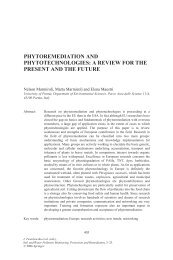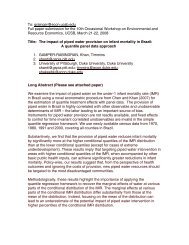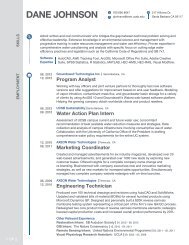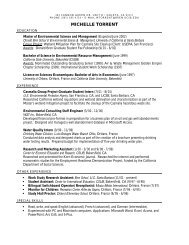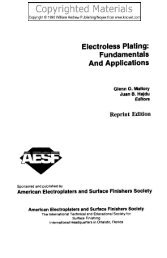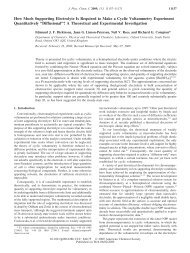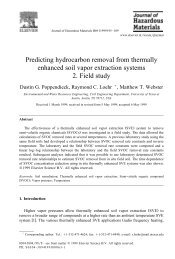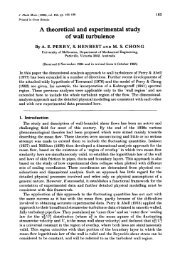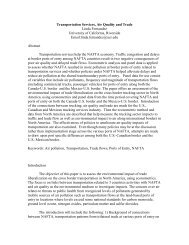anaerobic dehalogenation of halogenated organic compounds
anaerobic dehalogenation of halogenated organic compounds
anaerobic dehalogenation of halogenated organic compounds
You also want an ePaper? Increase the reach of your titles
YUMPU automatically turns print PDFs into web optimized ePapers that Google loves.
Mole Fraction<br />
512 Max M. Häggblom et al.<br />
1.0<br />
0.8<br />
0.6<br />
0.4<br />
0.2<br />
0.0<br />
1.0<br />
0.8<br />
0.6<br />
0.4<br />
0.2<br />
0.0<br />
1.0<br />
0.8<br />
0.6<br />
0.4<br />
0.2<br />
0.0<br />
A<br />
1,2,3,4 -TeCDD<br />
1,2,4 -TrCDD<br />
1,3 -DCDD<br />
B<br />
1,2,3,4 -TeCDF<br />
TrCDF<br />
2,3,4,5,6 -PeCB<br />
C<br />
2,4,5,6 / 2,3,5,6 -TeCB<br />
2,4,6 -TrCB<br />
0 50 100 150 200 250<br />
Time (Day)<br />
Figure 4. Dechlorination by Dehalococcoides ethenogenes strain 195 <strong>of</strong> (A) 1,2,3,4-<br />
tetrachlorodibenzo-p-dioxin (B,) 1,2,3,4-tetrachlorodibenz<strong>of</strong>uran and (C) 2,3,4,5,6-<br />
pentachlorobiphenyl (from Fennell et al., 2004b).<br />
<strong>dehalogenation</strong> in sediments is an important environmental process because<br />
it has the potential <strong>of</strong> decreasing the toxicity <strong>of</strong> organohalides such as<br />
PCDD/Fs. Dehalogenation may also be advantageous in designing<br />
contaminant treatment trains, since lesser chlorinated congeners are more<br />
susceptible to subsequent aerobic degradation.<br />
4. PRIMING DEHALOGENATION<br />
Recent research, including our own (Vargas et al., 2001; Fennell et al.,<br />
2004a; Ahn et al., 2005), has shown the potential for stimulation <strong>of</strong><br />
dechlorination <strong>of</strong> <strong>halogenated</strong> <strong>organic</strong>s in sediments under a variety <strong>of</strong><br />
conditions. Biostimulation may be achieved through the addition <strong>of</strong> electron<br />
donors and/or <strong>of</strong> <strong>halogenated</strong> co-amendments that serve as more bioavailable<br />
electron acceptors.<br />
Hydrogen is used by many dehalogenating bacteria and has also been<br />
shown to enhance dechlorination <strong>of</strong> PCDD residues in contaminated<br />
sediments (Albrecht et al., 1999). Hydrogen can be supplied directly or



